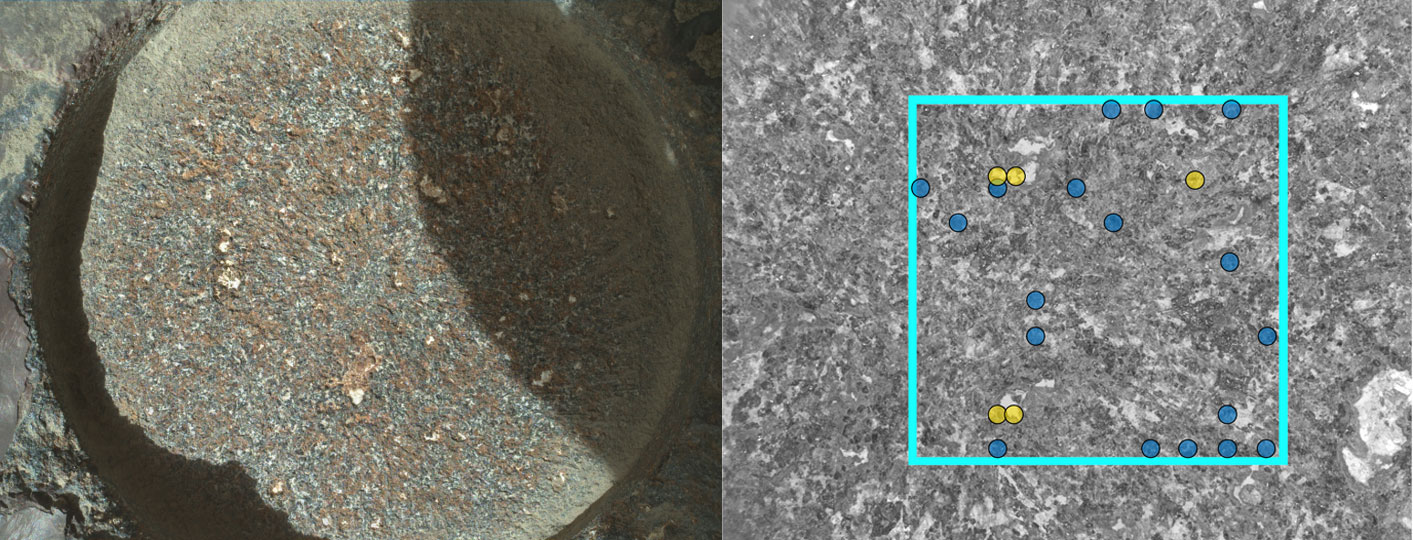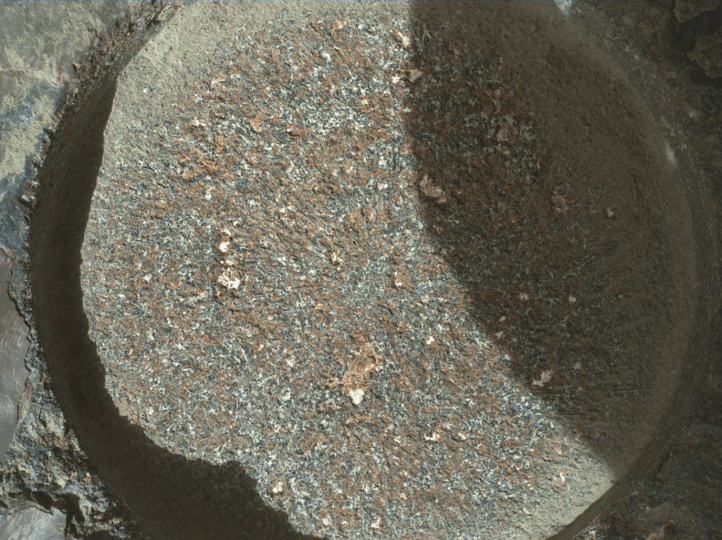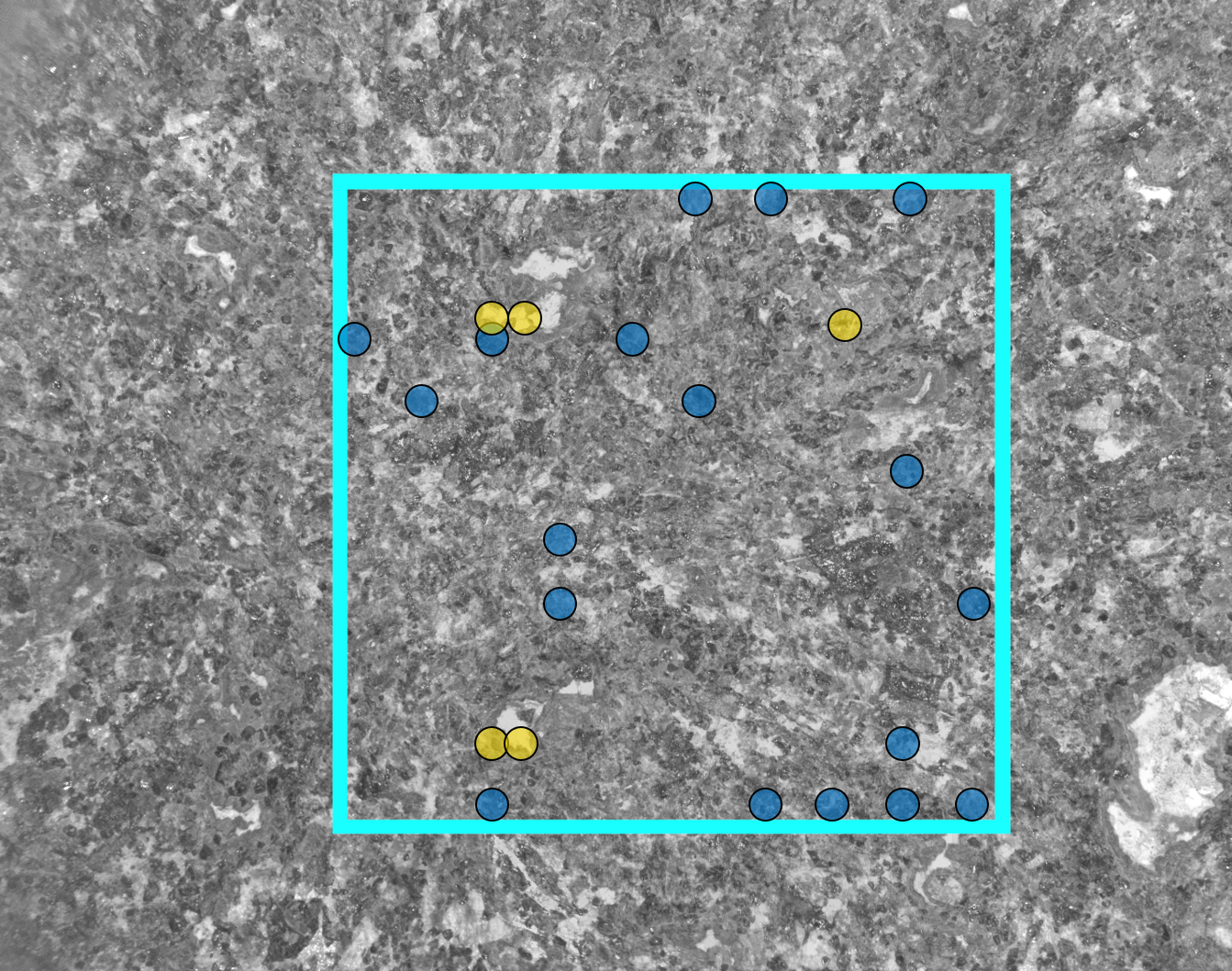WATSON’s View of ‘Bellegarde’

| Credit | JPL-Caltech/MSSS/LANL/Photon Systems/CIW/University of Pittsburgh |
|---|---|
| Language |
|
NASA’s Perseverance Mars rover used its WATSON (Wide Angle Topographic Sensor for Operations and eNgineering) camera took take eight images – combined here into the single composite image on the left – of a rock abraded by a tool on the rover’s robotic arm. The images were taken on Aug. 27, 2021 (the 185th Martian day, or sol, of the mission). Nicknamed “Bellegarde,” the abraded target is 0.4 inches (5 centimeters) in diameter.
The image on the right shows details of the abrasion target with a blue box outlining the location of spectral scans performed by the SHERLOC (Scanning Habitable Environments with Raman & Luminescence for Organics & Chemicals) instrument. This area was scanned by SHERLOC for specific minerals on Aug. 28, 2021 (the mission’s 186th sol).
A subsystem of SHERLOC, WATSON can document the structure and texture within a drilled or abraded target, and its data can be used to derive depth measurements. The area within the blue box is roughly 6.5 millimeters squared.
NASA's Jet Propulsion Laboratory built and manages operations of Perseverance and Ingenuity for the agency. Caltech in Pasadena, California, manages JPL for NASA. WATSON was built by Malin Space Science Systems (MSSS) in San Diego and is operated jointly by MSSS and JPL.
A key objective for Perseverance's mission on Mars is astrobiology, including the search for signs of ancient microbial life. The rover will characterize the planet's geology and past climate, pave the way for human exploration of the Red Planet, and be the first mission to collect and cache Martian rock and regolith (broken rock and dust).
Subsequent NASA missions, in cooperation with ESA (European Space Agency), would send spacecraft to Mars to collect these sealed samples from the surface and return them to Earth for in-depth analysis.
The Mars 2020 Perseverance mission is part of NASA's Moon to Mars exploration approach, which includes Artemis missions to the Moon that will help prepare for human exploration of the Red Planet.
JPL, which is managed for NASA by Caltech in Pasadena, California, built and manages operations of the Perseverance rover.
For more about Perseverance: mars.nasa.gov/mars2020


